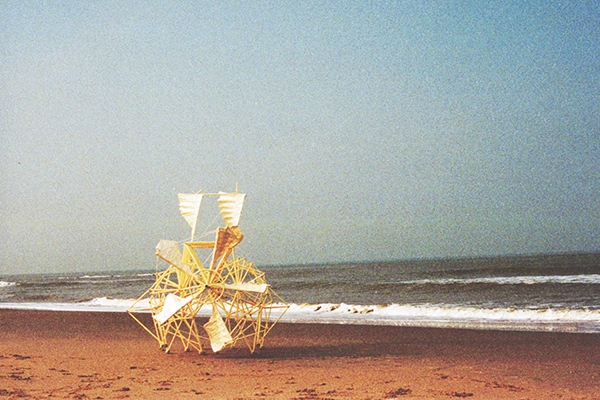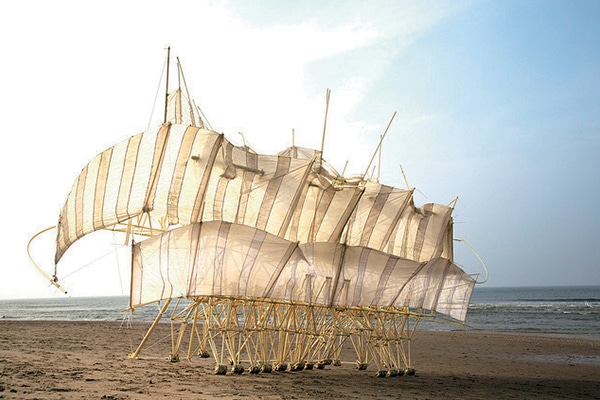Over time, the Strandbeests have dramatically evolved in form and function as Jansen become more intrigued in the immediate quasi-evolutionary process playing our before him. The product of 28-years of ongoing evolution through constant experimentation and development, these Strandbeests have advanced from rudimentary structures to complex creatures that are able to respond autonomously to environmental conditions.
Some Strandbeests are able to detect incoming tides and retreat to higher ground. Others are able to sense the strong wind of an impending storm and pound an anchor into the sand to prevent itself from being blown away. When there is no wind, these creatures tap into plastic bottle ‘stomachs’ for stored wind to propel them forward. This section looks into several of the evolutionary adaptations that the Strandbeests have acquired over the years.

Animaris Rigide Properans
Tepideem, the Less-Hot Period
1994 – 1997
The propeller attached to the back of Rigide Properans enabled it to walk sideways against the direction of the wind at considerable speed. Jansen calls it his ‘sturdy hasty beach animal’. Rigide Properans is now considered a fossil as it can no longer move.


Animaris Apodiacula
Aurum, the Period of Gentle Breeze
2013 – 2015
Apodiacula is one of the tallest Strandbeests created by Jansen. It has striking protruding beams that work as outriggers, giving Apodiacula stability in strong winds and allowing it to walk without toppling over.
